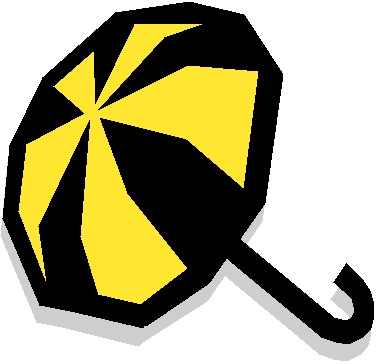LITR 3731 Creative Writing 
Lecture Notes
2nd class meeting, 1st on poetry
| preview schedule draft exchanges workshop: Veronica & Alicia revision accounts reading quiz [break] assignments reading highlight: Jeff Derrickson lyric definition image > feeling |
|
preview schedule
rush to midterm = poetry presentation & revision account
poetry presenters are set
business, presentations
when we begin poetry presentations-discussions, move tables into rectangle / circle
revised syllabus + presentation schedule
handouts
Attitude toward presentations
No presentation is "perfect"--each is its own special moment or cooperative invention
But neither do we go free-form--have to make sure some things get done
see p. 5 of syllabus for presentation format
Question for now:
What are you already learning about writing poetry? Or creative writing in general?
What kinds of conflicts does this learning create in you?
p. 50 honesty
but honesty doesn't necessarily mean "what you've always thought"
honesty + ingenuity, fresh honesty
Three Genres
ch. 7 (pp. 94-104): "From Lines to Stanzas"
ch. 8 (pp. 105-116): "Free-Verse Patterns"
Among most interesting chapters in the book. How is free verse still poetry instead of just prose-in-broken-lines?
ch. 9 (pp. 117-127): "Internal Order"
How subject matter can organize the poem
Poetry a sensory / intellectual / emotional experience
Two senses prevail:
1. sight--"the mind's eye"; imagination / intellect
2. sound--the poem's rhythm, tone
Next week’s assignment:
two workshops
This week, mostly just reviewing standard process
next week more student input—pauses, reviews, so think about what you’re seeing and what you’d like to see
inevitable problem: a few dependable students dominate discussion
if they can pause, some shier students sometimes come forward (but not dependable)
Lecture / discussion on reading assignment
Reading highlight assignment on p. 7
After Jeff's reading highlight, other students welcome to pitch in comments or highlights from reading assignment.
shock of college-level learning: expect some final answers, get more talk
taught by professional scholars who quickly discover how much there is to know and how little a single human mind and life can manage
serious student changes purpose:
Instead of going to college to get the answers, you learn to ask questions and keep learning
Never finish, but OK--not individual mastery
but helping system of learning, possibility of self-correcting civilization
never perfect, but if it breaks down everything’s worse
Teachers' job not to “teach the rules” (though testing / accountability always enforce)
English teachers, literary people describe—if you try to enforce, the cool and creative students will rebel, and the dull students who might benefit from rules aren't listening anyway
11 rules > conventions [or customs]
Textbook: different terms
7 simple versus sophisticated poetry
Mass-market
3 images > similes, metaphors, and symbols
7 making language suggest more than literal meaning
57 images as concrete nouns (explain “concrete”) > appealing to senses
Opposite: abstraction
> translate into sight and sound
58 a fully developed image
Sound
Sound of words (1)
Rhythm
Rhyme (both mnemonic, used more before writing)
Poetry is never far from voice (4)
Poetry readings (2)
7 simple versus sophisticated poetry
Mass-market
Unvaried metrical lines
8 honest craft that requires practice
9 nothing new and insightful
11 Pound mutes both rhymes and meter
11 rules > conventions
Ch 3 Sources: Where Poems Come From
45 personal experience
A sudden leap, a connection
46 rooted in specific place, not abstraction
48 what ought to feel x true emotions
49 ambivalence
50 consider mixed feelings, and be honest about them
p. 50 honesty
but honesty doesn't necessarily mean "what you've always thought"
honesty + ingenuity, fresh honesty
Every evil a secret appeal
51 have fun with language
52-3
Impenetrable haze Poem—nothing hangs together, no two people can agree, “It means whatever you want it to mean”
54-6 Six Ways to Jump-Start a New Poem
1. Other poets
2. journal
3. senses—sight, sound, others
4. vivid experiences (shame, fright, mix of admiration and resentment)
5. friends and relations
6. start writing
Ch. 4 Images: The Essential element
57 images as concrete nouns (explain “concrete”)
Opposite: abstraction
> translate into sight and sound
58 a fully developed image
58-9 strong nouns, x-adjectives
59 images > figures of speech
60 simile, metaphor—both comparisons
60 examples
62-3 other figures of speech
63 cliché as dying metaphor
65 image as symbol, greater range of meaning
67 public symbol
68- image clusters (extended metaphor)
Ch. 5 The Sound of Words
p. 73
1. identical or similar beginning sounds
2. sounds within two or more words
3 rhyme
(implies image development)
72-73 nonrhyming devices of sound
74-5 Rhymes, true, slant (78), eye / sight
80 sound and sense are fused
Ch. 6 traditional rhythms
Reading assignment in 2 weeks
Three Genres
ch. 7 (pp. 94-104): "From Lines to Stanzas"
ch. 8 (pp. 105-116): "Free-Verse Patterns"
Among most interesting chapters in the book. How is free verse still poetry instead of just prose-in-broken-lines?
ch. 9 (pp. 117-127): "Internal Order"
How subject matter can organize the poem
Name: __________________
LITR 3731 Quiz 1 on reading assignments for Three Genres, chs. 1, 3, 4, 5, 6
Briefly answer at least five of the following seven questions. You may answer them all as insurance. Incomplete sentences are acceptable.
1. What styles or messages does our book associate with “mass-market poetry?”
2. Our textbook lists “seven deadly sins of poetry” (pp. 52-4). Summarize one or more.
3. The textbook also suggests “Six ways to jump-start a new poem” (pp. 54-6). Summarize one or more.
4. You could probably define or describe “Images” without having read the textbook, but what new ideas or terms did your reading give you relative to imagery, metaphors, clichés, similes, figures of speech, symbol, etc.?
5. What are “image clusters?”
6. What is meant by “muting rhyme,” why is it desirable, and how is it achieved?
7. What attitude is encouraged toward rhythm or meter? What are the upsides or downsides of too strict or too loose a meter?

